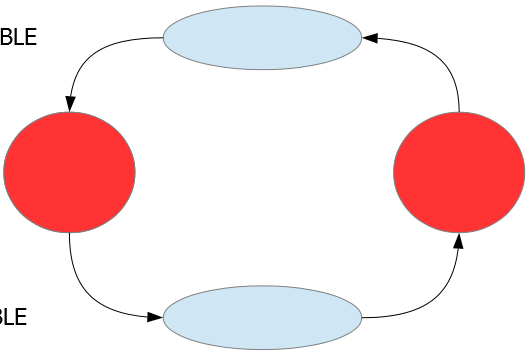An interrupt signals a change of state in peripherals and can be used to alter program execution. Embedded applications use interrupts, e.g. to respond to events in real-time. It is, therefore, important that a system can detect errors in the interrupt functionality. Specifically, Class B applications should be able to detect whether an interrupt is not being executed as often as expected (or not at all).
The chosen method is time-slot monitoring with the Real-Time Counter (RTC, clock independent from the CPU clock). In short, any interrupt to be monitored has to increase a counter every time it is executed. The RTC generates an interrupt periodically where the interrupt counters are checked. If any counter is outside an interrupt-specific configurable range, the error handler is called.

The implemented interrupt monitor has two features that further increase the robustness of the main application. The first one is an interrupt counter that increases only if the interrupt is ON, and therefore the counter should be zero while an interrupt is OFF. This is checked by the interrupt counter for all registered interrupts. Otherwise, the error handler is called. The second feature is that enabling an interrupt that is ON or disabling an interrupt that is OFF will call the error handler if the constant CLASSB_STRICT is defined.
The RTC calls the interrupt monitor function periodically. All registered interrupts are processed according to their state. Active interrupts are checked for their frequency. If there is no error, the interrupt monitor resets the counter. If an error is found the error handler is called and the monitor ends immediately (this is configurable). The counter of inactive interrupts is compared to zero for coherence. If the main application has requested to activate an interrupt, its state is set to ON and vice versa. Note that when the state is OFF the interrupt counter is set to zero.
In order to monitor an interrupt the following steps should be followed:
- 1.The interrupt should be declared in
classb_int_identifiersby providing an identifier to the interrupt. - 2.The main application has to register the interrupt by calling
classb_intmon_reg_int(). A structure is then created for the interrupt. - 3.The RTC has to be set up to generate an interrupt periodically and to call back the interrupt monitor.
- 4.The interrupts that have to be monitored should call
classb_intmon_increase()on each execution. - 5.The main application has to request that the monitor starts checking the interrupt. This is done by changing the interrupt state to ENABLE with
classb_intmon_set_state(). - 6.If at some point an interrupt should not be monitored anymore, the main application can change the state to DISABLE.
In the example application, a Timer/Counter (TC) is set up to generate an overflow interrupt periodically, which is checked by the monitor. In addition, the application sets up two button interrupts. The first one changes the frequency of the TC interrupt. The second one deactivates the interrupt in the monitor. An LED is switched ON to show that the application is working correctly. The application stays in a loop with the LED ON as long as the buttons are not pressed. If the first button is pressed, the frequency of the TC interrupt will change, and the monitor should set the error flag. The main application will then leave the loop and switch the LED OFF. The second button can be pressed in order to deactivate the TC interrupt in the monitor. In this case, pressing the first button still leads to a change in the frequency of the interrupt but the monitor will not generate an error.
The interrupt monitor relies on a working RTC. The RTC also supports the CPU frequency tests and it is checked in the related software modules. It can, therefore, be assumed that there is no failure in the RTC. In order to increase the reliability of the application, registered interrupts could have a maximum value of the counter, which could be tested within the interrupt. If the counter reaches this value, it can then be assumed that the interrupt monitor is not working.
The monitor can be tested in different ways.
- An interrupt could be set up and then its frequency could be modified in order to generate an error. This is implemented in the example application.
- The counter of an interrupt could be modified while debugging. This could be done both for active and inactive interrupts.
- If the symbol CLASSB_STRICT is defined, the program could activate or deactivate an interrupt twice, which should lead to an error